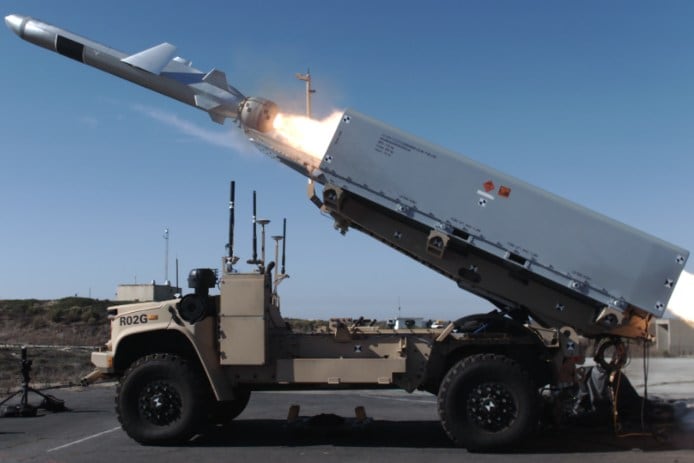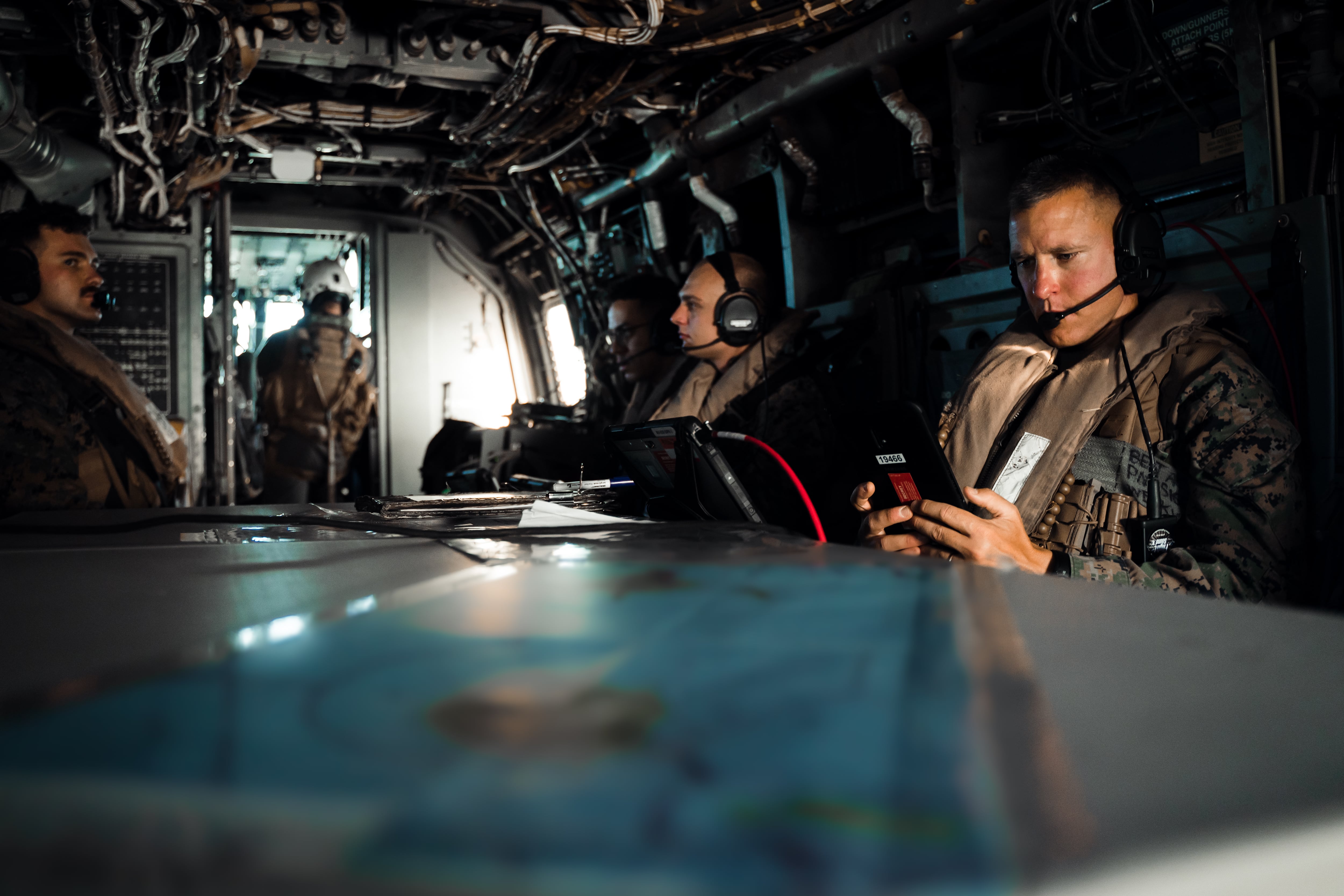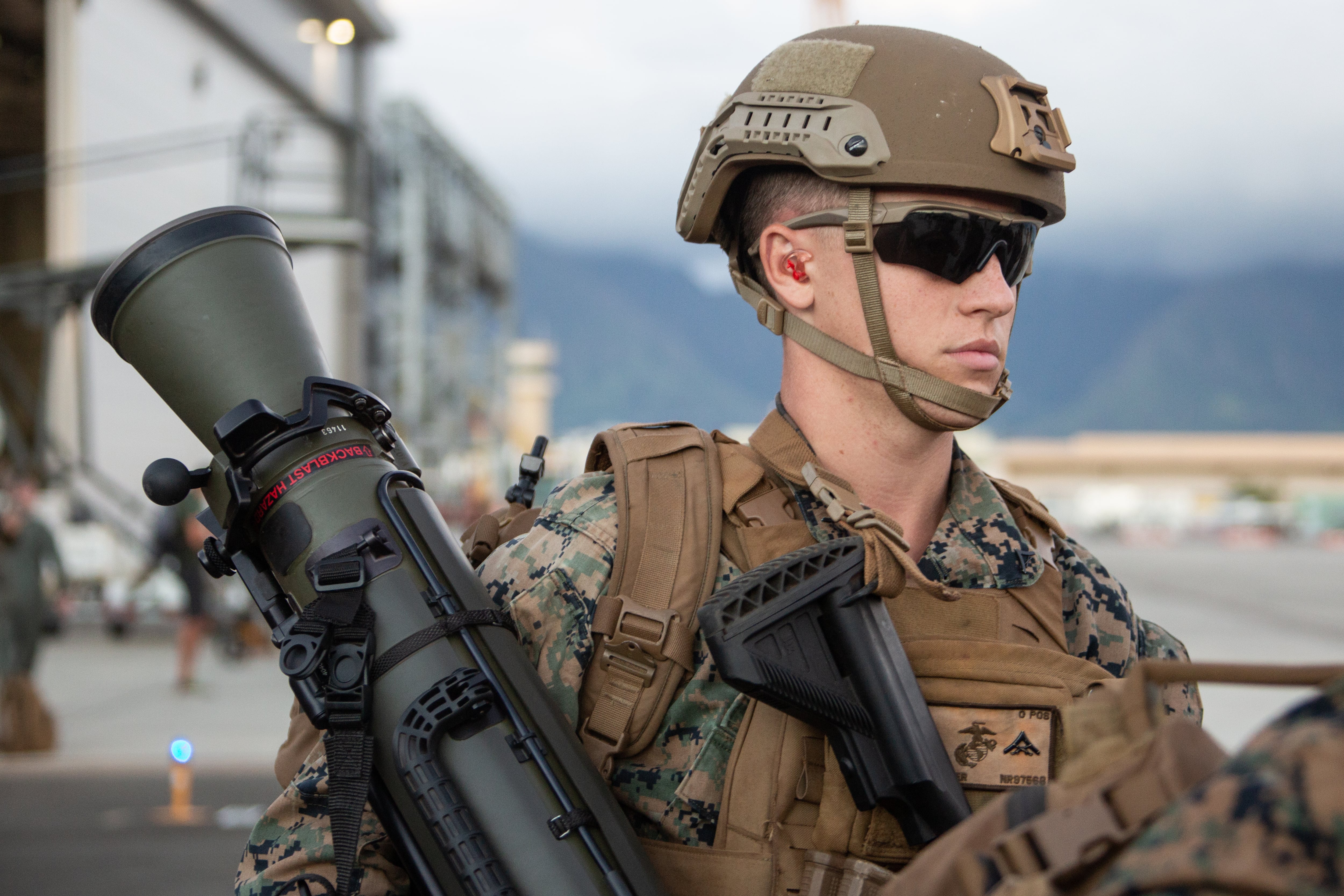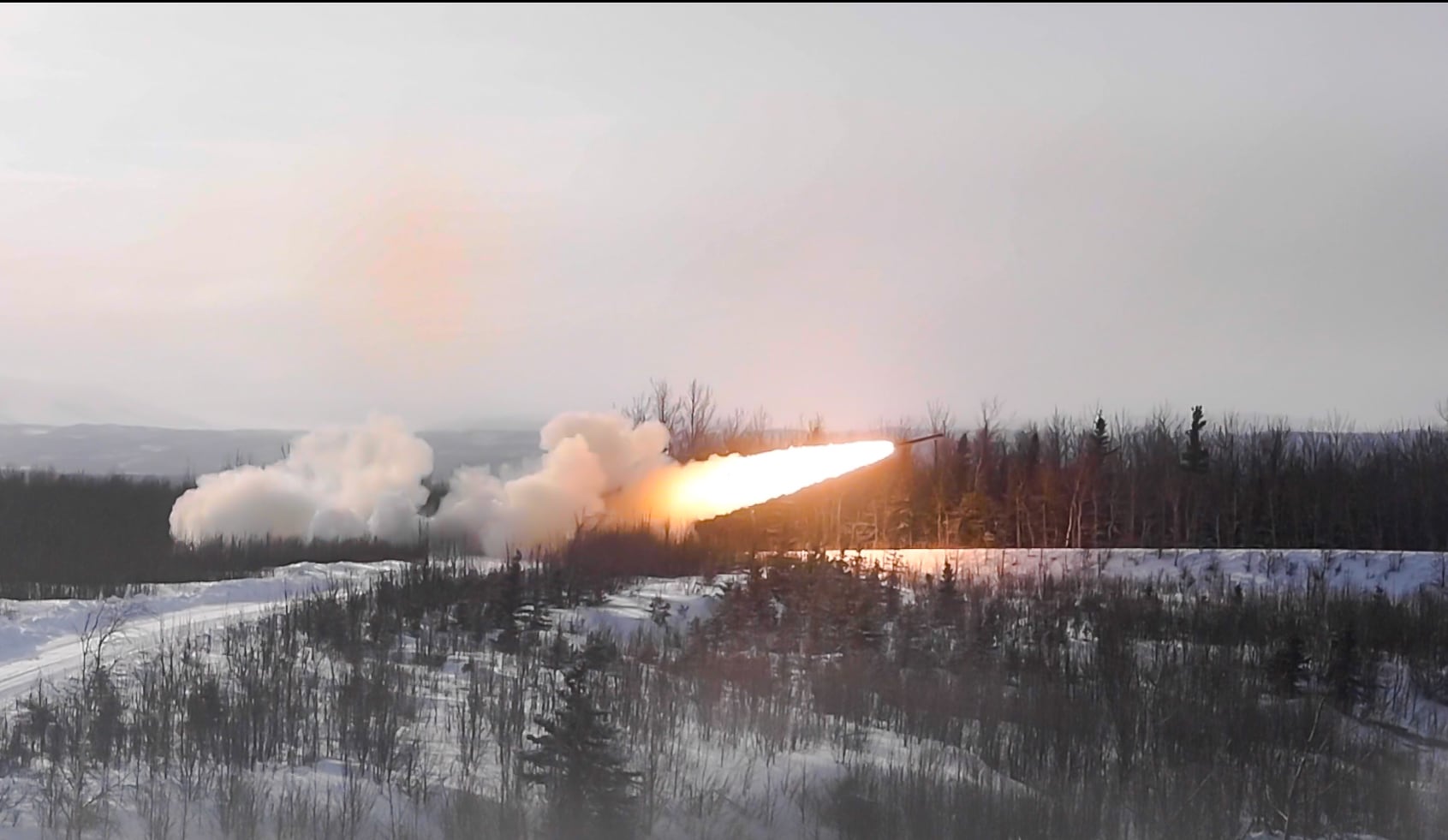In August, the 3rd Marine Division, using new technology, and experimental formations and tactics, modernized its concepts for the war of the future.
The raid took place as part of Large Scale Exercise 2021 ― potentially the largest exercise conducted by the Marine Corps and Navy since the Cold War, according to a Navy press release.
The exercise involved 17 time zones and all three Marine Expeditionary Forces alongside five numbered fleets ― putting to test some concepts of Force Design 2030 and working to improve Navy-Marine Corps integration.
RELATED

Infantry Marines with 1st Battalion, 3rd Marines, took off from Marine Corps Base Hawaii on MV-22 Ospreys and CH-53E Super Stallions for a 135-mile trip to another island where the assault took place, Capt. Kevin Smith told Marine Corps Times in a phone call.
The mission was to take control of a small island then set up a defensive position that would allow Marines from 1st Battalion, 12th Marines, to land with heavy artillery capable of notionally sinking any enemy within 100 nautical miles.

Prior to landing, Marine commanders on the Ospreys were able to take a close look at the enemy positions observed by a drone sent over the landing zone ahead of the assault.
“The (Network On-the-Move Airborne) can actually give the commander a picture while he’s flying … while the troops are in movement, to keep eyes on the objective to monitor any changes and make changes on their course accordingly,” said Cpl. Brooks Woodhill, a transmission systems operator with headquarters company for 3rd Marine Regiment.
Woodhill, a trained radio operator, said he recently learned how to the use the Network On-the-Move Airborne, and noted how easy it was to pick up on.
New grunt formations
Grunts deployed in an experimental formation that had infantry units ditching weapons companies and platoons, while using every Marine on every weapon depending on the mission.
“What this allows us to do is get more specialized training on every single weapons system versus just what we were trained to do at the schoolhouse,” Sgt. Lorenzo Monclava, a team leader with 1st Battalion, 3rd Marines, told Marine Corps Times in a phone interview.
Some 0311 rifleman even learned the basics of firing a mortar.
“A lot of the leaps … that I’ve experienced myself is just seeing how quickly each individual can learn all sorts of different weapons systems and all the cross training that we’ve done,” Lance Cpl. Guner Eof, a mortarman with 1st Battalion, 3rd Marines, told Marine Corps Times.
Eoff has so far only taught other infantry Marines the very basics of operating a mortars system, but he could see that changing in the future.
“We could very easily stack on to more of the advanced stuff,” Eoff said.
The Hawaii-based 1st Battalion, 3rd Marines, along with 2nd Battalion, 5th Marines, out of Camp Pendleton, California, and 1st Battalion, 2nd Marines, out of Camp Lejeune, North Carolina, are the three Marine battalions conducting these formation experiments.

The change of formation and the new technology for platoons, like drones, allowed the infantry Marines to take more responsibility at a lower level, Monclava said.
“It allows us to pull away from what a normal infantry unit would do, be more decentralized and be able to be more self-sufficient,” Monclava said.
But with the greater independence, small-unit leaders will have to take on more responsibility.
As a response the Corps is overhauling its basic infantry training course and working to age up the Marines who take over those roles.
The Corps is working hard to ensure sergeants oversee fire teams, staff sergeants are in charge of squads, while gunnery sergeants take over as platoon sergeants.
“We have a lot more seniority in our (company) than we ever had before,” Monclava said.
Monclava said between his squad leader and the team leaders they have a combined 30 years of infantry experience to help lead the young inexperienced Marines.
“For most of these guys it was their first attempt at a raid, so it allowed us to show them what right looks like and the things that we did do wrong we were easily able to fix,” he said.
The experimentation did not end when the grunts secured the island.
RELATED

After the island was secure, the artillery Marines arrived with M777s but conducted fire missions with a notional Naval Strike Missile, Maj. Kurt Stahl said.
The Marine Corps sees its role in the future fight as one that opens up sea lanes for the Navy by sinking enemy ships or forcing them to stay in port.
The Naval Strike Missile, used by Marines well-hidden on small islands or dense jungle in the South China Sea, is one of the keys to making that mission work.
The Corps already has committed to switching most of its artillery batteries from tube artillery to ones capable of firing the Naval Strike Missile, to up its fire power against a near-peer adversary.
During the exercise Marines launched a Naval Strike Missile at a scrapped Navy hull and used an unmanned ship to transport logistical support to dispersed Marines.
Despite the size of the exercise and the amount of experimentation, for Monclava this exercise was just another day preparing for war.
“We train every single exercise like it could be a real world mission, we have a very high level of trust and confidence in the ability of our Marines,” Monclava said.




